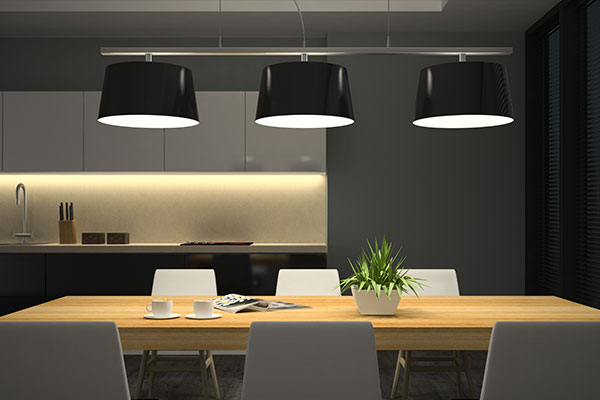The move towards more energy efficient households and the potential to reduce electricity and gas costs has gained further momentum with the NSW Government’s Energy Savings Scheme.
“Householders and small businesses may be able to benefit from a range of energy efficiency upgrades in their homes, such as replacing downlights with LEDs,” says the Energy Savings Scheme website.
Essentially the scheme is designed to reduce electricity or gas use by offering financial incentives to upgrade current fixtures.
If we take lighting as an example, it may be best if your halogen downlight was replaced with an LED luminaire light, or a parabolic aluminised reflector was replaced with an efficient luminaire or an Edison screw or bayonet lamp was replaced with an LED lamp.
“Residential and small business upgrades are performed by businesses that are accredited under the HEER method and they may be able to provide discounted energy savings services or products to residential and small business customers.”
As part of the scheme, the Government has developed what it calls the HEER method or the Home Energy Efficiency Retrofits. This method enables Accredited Certificate Providers (ACP) to retrofit or upgrade lighting, draught proofing and other equipment. The Independent Pricing and Regulatory Tribunal (IPART) is responsible for the accreditation.
To participate, you should first choose an Accredited Certificate Provider that you’d like to work with. Here’s the list of Providers.
The ACP should provide you with a comprehensive proposal of the recommended changes for your property. As part of the proposal, the ACP may request particular commitments from you. Be sure to ask lots of questions so that you fully understand what’s being proposed and how it will reduce your energy use and therefore your energy costs.
If you’re renting the property and you’d like to participate in the initiative, you may need to get your landlord’s approval to install or change equipment.
The cost will depend on the size and scope of work. At a minimum, you’ll have to pay $30 (excluding GST) for the products, installation, assessment and other related expenses. Again, talk with your ACP so that you fully understand the upfront financial commitment. This one-off expense should be off-set by the estimated savings on your energy bills over time. In the long run, you should be better off.
Once the work has been completed, you should always check that the job has been completed to your satisfaction and in line with what was documented in the proposal. If you’re not satisfied, your first step is to address your concerns with the ACP. If they don’t provide you with a satisfactory remedy, you’re entitled to contact the Energy Savings Scheme. NSW Fair Trading may also be able to assist.
In addition to the retrofitting of fixtures, you should also consider replacing electrical items with more energy-efficient models – whether that be washing machines, clothes dryers, dishwashers, refrigerators or televisions.
If you’d like to know more about the scheme, contact your Strata Manager at Netstrata.
Subscribe to our newsletter
By signing up to our monthly newsletter, you’ll be the first to get the latest news and updates from our team.
SUBSCRIBERelated Posts
Strata
Hidden electricity costs in apartments
Keeping a lid on energy costs inside your apartment is as simple as following a few simple steps – but what about electricity use in your building’s hallway, laundry or car park? You may not realise it but you could be wasting hundreds of dollars each year in electricity costs for common areas that are […]

